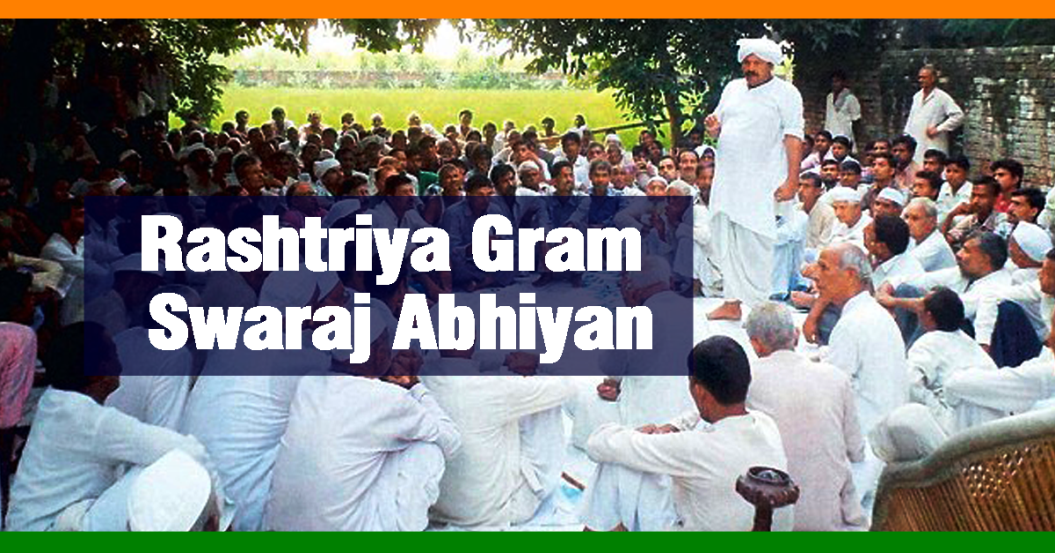Description

Copyright infringement not intended
Context - The Union Government has approved the continuation of Rashtriya Gram Swaraj Abhiyan (RGSA) from April 2022 to March 2026.
Details
- The Cabinet Committee on Economic Affairs chaired by the Prime Minister has approved the continuation of Rashtriya Gram Swaraj Abhiyan (RGSA) from 01.04.2022 to 31.03.2026.
Rashtriya Gram Swaraj Abhiyan
- Rashtriya Gram Swaraj Abhiyan (RGSA) was launched on 24th April 2018 as an umbrella scheme of the Ministry of Panchayati Raj.
- It is a Centrally Sponsored Scheme to develop and strengthen the Panchayati Raj System across India in the rural areas.
- Focus area:
- Basic orientation training for the Elected Representatives (ERs) of Panchayats, within 6 months of their election.
- Capacity Building of ERs with Priority to Aspirational Districts and Mission Antyodaya clusters.
- Strengthening of the Panchayat – SHG partnership.
- Gram Panchayat infrastructure.
- Use of IT for distance learning & for e-Enablement of Panchayats.
- Institutional support for innovations.
- To promote the provision of adequate manpower at the GP level & to provide support for technical manpower.
- To facilitate Electronic Fund Transfer (EFT), Public Finance Management System (PFMS), use and Geo-tagging of assets in Gram Panchayats.
Significance of Rashtriya Gram Swaraj Abhiyan
- It will help more than 2.80 lakh Rural Local Bodies across the country to develop governance capabilities to deliver on Sustainable Development Goals through inclusive local governance with a focus on optimum utilisation of available resources.
- The key objectives of the Abhiyan:
- Poverty free and enhanced livelihood in villages.
- Healthy Village.
- Child-Friendly Village.
- Water Sufficient Village.
- Clean and Green Village.
- Self-Sufficient Infrastructure in Village.
- Socially Secured Village.
- Village with Good Governance.
- Engendered Development in Village.
- Strengthening Panchayats will promote equity and inclusiveness, along with Social Justice and economic development of the community.
- The use of e-governance will help achieve improved service delivery and transparency.
- It will strengthen Gram Sabha to function as an influential institution with the social inclusion of citizens particularly the vulnerable groups.
- Strengthen the institutional structure for capacity building of PRIs at the national, state and district level with adequate human resources and infrastructure.
Step by the Government to promote rural development
- Deen Dayal Upadhyaya Grameen Kaushal Yojna
- It is a placement linked skill development scheme for rural poor youth.
- Swachchh Bharat Mission
- To provide access to every person to sanitation facilities including toilets, solid and liquid waste disposal systems, village cleanliness and safe and adequate drinking water supply.
- Sansad Adarsh Gram Yojna
- Each Member of Parliament will take the responsibility for developing physical and institutional infrastructure in selected villages.
- Mahatma Gandhi National Rural Employment Guarantee Scheme (MGNREGS)
- Provide ‘right to work' to the people falling Below Poverty Line.
- It guarantees 100 days of employment in a year to the village people.
- 50 workers should be women.
- National Rural Livelihood Mission
- Under this scheme, the government provides loans up to 3 lakh rupees at the rate of 7% which could be lowered to 4% on the timely repayment.
- Pradhan Mantri Gram Sadak Yojna
- To provide all-weather road connectivity to the rural areas whose population is more than 500 persons and in terms of hilly areas, it is 250 persons.
- Antyodaya Anna Yojna (AAY)
- The scheme provides food grains to Below Poverty Line (BPL) families at a very subsidized rate.
- A total of 35 kg of food grains is provided to a family. Rice is provided at the rate of Rs. 3/kg and wheat at 2 Rs.2/kg.
- National Rural Health Mission
- To provide accessible, affordable and accountable quality health services even to the poorest households in the remotest rural regions.
- Aam Aadmi Bima Yojna
- Under this scheme, one member of the family is covered.
- The premium of Rs. 200 per person per annum is shared by the state and central governments.
- The insured person need not pay any premium if his/her age is between 18 years to 59
- Sarva Siksha Abhiyan
- Its main aim is to make free and compulsory education for children between the ages of 6 to 14, a fundamental right.
- The right to education is related to the 86th Amendment to the Constitution of India.
https://www.pib.gov.in/PressReleasePage.aspx?PRID=1816362














